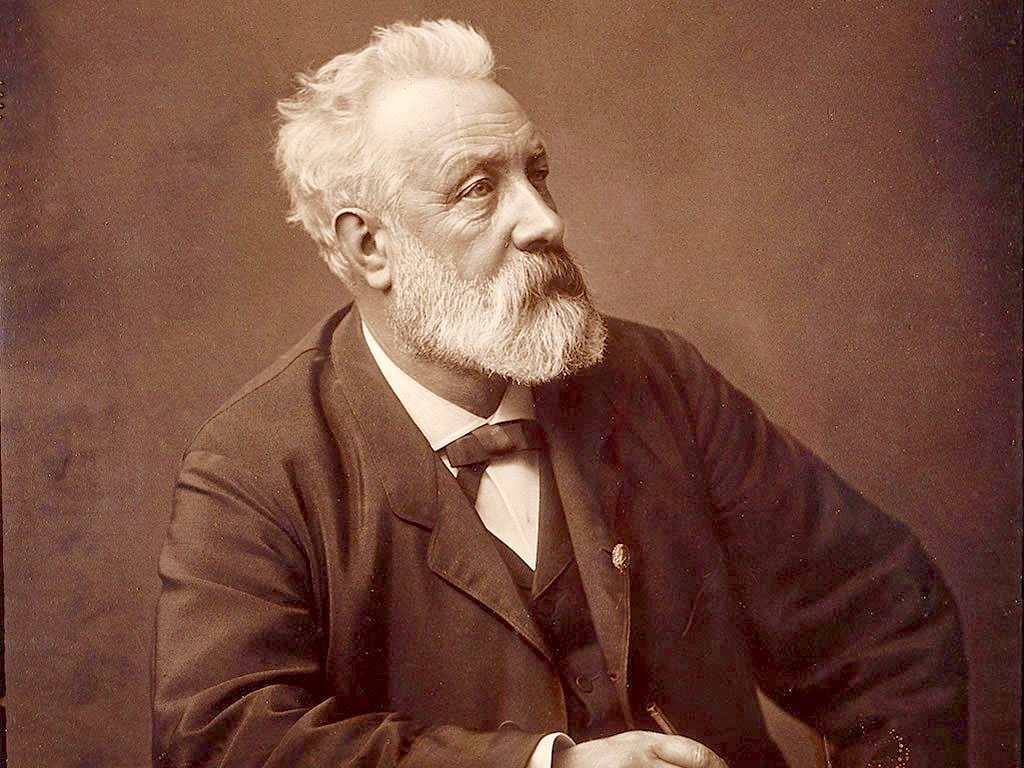|
THE HYDROGEN MOLECULE
IN 1874 JULES VERNE PREDICTED HYDROGEN WOULD BE THE FUEL OF THE FUTURE
Please use our A-Z INDEX to navigate this site or return HOME
|
|
|
RACE AGAINST TIME: This could have been another of Jules Verne's titles. But it is not a work of science fiction, it is a man-made problem today that even the master storyteller would have had trouble predicting. Despite our scientists telling us the global warming is at a crucial tipping point, world leaders are allowing the use of fossil fuels to superheat the planet with dire consequences. Jules was adamant that hydrogen would be a source of power for mankind in the future he envisioned. In our view he was bang on the money. Green hydrogen offers us a sustainable future, based on splitting water using electrolyzers, to recombine for heat or electricity. We can use renewable solar and wind power, to create a circular economy, without CO2 and other harmful gases and particulates. This clean energy source can drive our automobiles and ships, as a major brake on climate change. What is holding us back and why? The technology exists today! Given the opportunity, we would like to prove it to you. If it is possible to complete the build of the Elizabeth Swann above by 2024, it will be the 150th anniversary of his prediction in his 1874 book: The Mysterious Island.
|
|
|
Hydrogen may provide fuel for cars, heavy good vehicles, fishing boats, tugs, container ships, cruise liners and yachts. For all these uses at present there is a perceived lack of infrastructure, especially at ports and harbours, where the choices of molecules presents with some confusion.
Hydrogen can be stored as a compressed gas, as a liquid, or in combination with nitrogen or carbon dioxide (ammonia or methanol), and as a hydride, combined with metals.
Hydrogen is the most abundant chemical substance in the universe, constituting roughly 75 percent of normal matter by mass and more than 90 percent by number of atoms.
Thus for use in IC engines expect a yield of 27%.
For electric motors, expect a yield of 40%. A 13% overall increase in efficiency.
That
does not take into account conversion from crankshaft to propeller
thrust. Where the electric drive train scores significantly. Especially
with submerged pod
thrusters, which need no gearbox or propshaft bearings/seals.
The global push for net zero carbon emissions is one of humanity's greatest challenges. In this film, the FT's Simon Mundy explores how hydrogen - the lightest, most abundant element in the universe - could play a crucial role. From southern Spain to Swedish Lapland, we meet those at the forefront of this fast-growing space - all seeking a share of the billions to be made in the emerging hydrogen economy.
WHY BOTHER?
The object of changing from fossil fuels to hydrogen based, or other cleaner fuels, is that scientists have proved that the greenhouse gasses we (humans) are producing as we industrialise, and as our population continues to grow, are causing serious harm to the planet, as climate change and with airborne pollution that is carcinogenic.
Many say it too late, but if we all push hard to identify paths to Net Zero, we may be able to define sustainable technology, where dirty fuels (and other habits) have gone unchecked, in the rush for economic growth. Where we should be aiming for circular stability.
For our part, with the Jules Verne JVH2 Trophy, we aim to bring these matters to the attention of the world via a thrill filled sporting challenge: Man and machine versus the elements, competing against each other to increase our knowledge and the potential for use of this most versatile molecule.
HOW VERSATILE ?
Hydrogen is way more versatile than fossil fuels, that mainly run piston and gas turbine engines (jets), with serious exhaust issues.
Hydrogen can be a peroxide, a hydride, compressed gas, liquid, ammonia or methanol. It can be used to run piston combustion engines (ICE), or be converted to electricity. All with clean exhausts. Wow!
But the most important thing, is that hydrogen can be made from renewable green energy, solar and wind. Where fossil fuels, once used, cannot be regenerated. Now that is what we call versatile.
|
|
|
|
|
|
Please use our A-Z INDEX to navigate this site
This website is Copyright © 2024 Jameson Hunter & Cleaner Ocean Foundation Ltd, equal opportunities companies. This website is carbon friendly, using less energy to load on average per page via simplicity & picture optimization. The same may not apply to third party links. The JVH2 trophy is inspired in part by the Eiffel Tower & Statue of Liberty.
|

